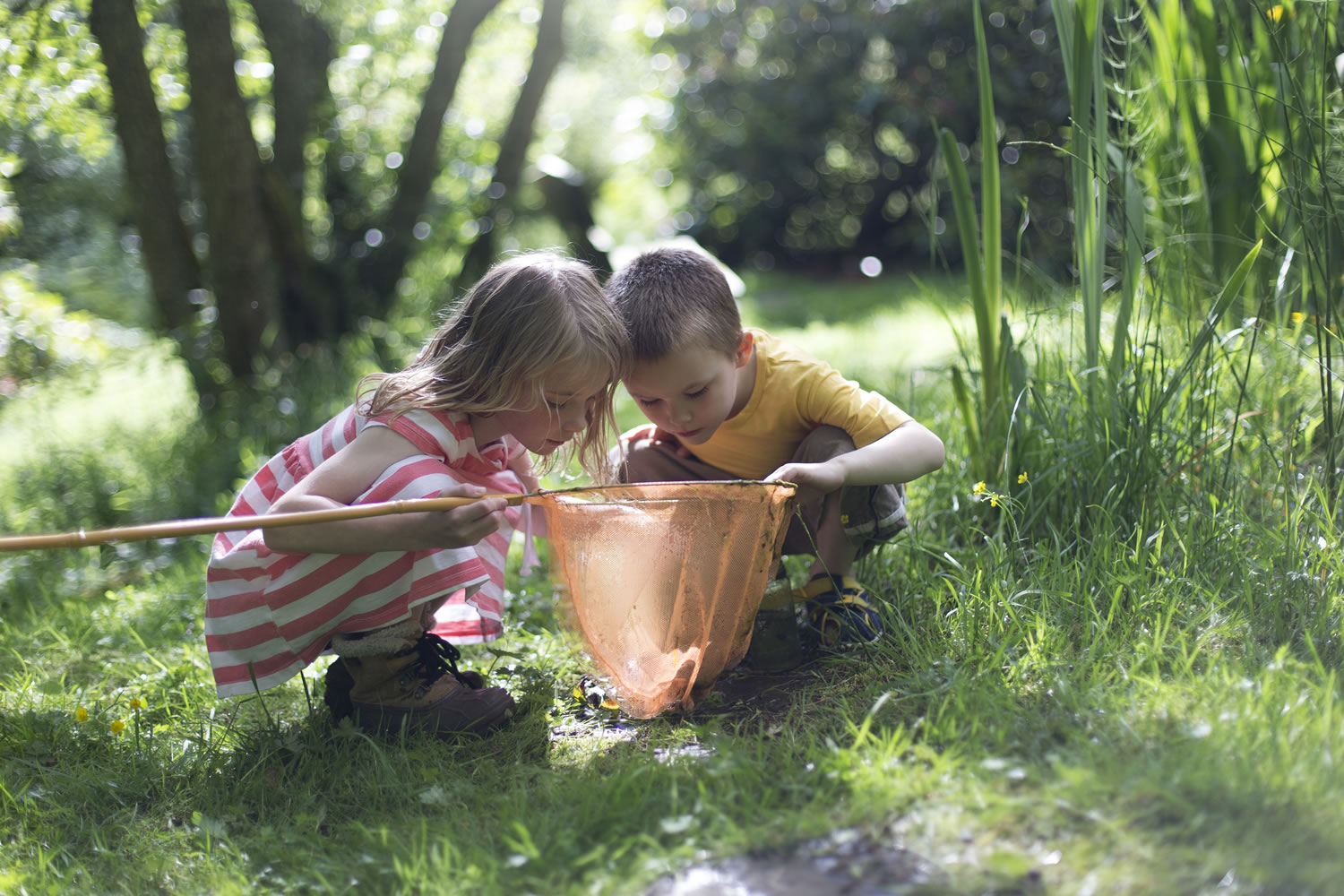Early learning in nature
Published on Tuesday, 17 August 2021
Last updated on Wednesday, 08 December 2021

Forest school. Bush kindy. Nature kindergartens. Whatever name it is given, the idea and practice of children purposefully learning in and from the natural environment has been active for generations in countries around the world.
However, as our world moves further and further away from more natural practices and lifestyles more widely, learning with nature and nature play are gaining more popularity.
When adopted into mainstream ECEC settings, these practices act as a way to combat the many problems associated with the modern lifestyle such as attention deficits, obesity and health disorders, and a lack of imagination and independent thinking in young children.
According to New Zealander Jan Benson in her He Kupu article on outdoor play and its impact on language development, multi-sensory experiences in natural settings help children develop the theories necessary for constant intellectual growth, through stimulating imaginations and affording an ideal environment for resourcefulness, inventiveness, and language development.
“The principal aims of these programs are the development of self-confidence and self-esteem; behavioural, social, emotional wellbeing; physical health and awareness through play, along with respect for and understanding of the natural environment,” she says.
In Australia, the founder of Victoria’s Bush Kinder Doug Fargher says that “children who spend time outdoors and connect with the natural environment tend to be healthier, happier, stronger and have a greater respect for the environment.”
Multiple studies performed around the world have proven that there are numerous benefits for young children who spend significant amounts of time playing outdoors in natural environments.
In an article written by Fargher and Louise Dorrat for the ABC, they describe some of these benefits as:
- reduced stress
- improved concentration
- improved physical skills and health
- social benefits (improved social interaction between children), and
- school readiness.
Other benefits listed from a number of other studies include stronger immune systems, improved risk-taking/ risk analysis, increased cognitive and emotional development, the development of problem-solving skills as well as higher levels of imagination and lateral thinking.
Some of the types of play afforded by time spent out of doors, which offer the greatest range of benefits for early learners according to The Education Hub include
- constructive play such as building shelters, dens and other constructions with loose parts,
- symbolic or dramatic play including playing house or pirates, and
- locomotive play involving gross motor activities and skills, such as running, hide and seek, and chase games which tend to take place where there are large open spaces.
While there are any number of approaches to introducing nature play within early learning environments, one option is to use Learning With Nature, an educational series designed for early childhood teachers and educators.
This professional package - which counts for five hours of professional development, and maps to NQS areas 1 and 3 - was created to help ECEC professionals understand nature pedagogy so that they can adopt natural learning into the way they teach every day.
The series teaches educators how to integrate nature into all aspects of learning and uses nature pedagogy to enable teachers to play with, teach and learn alongside the young children in their care.
Created by international educational consultant Claire Warden, the Learning With Nature series is made up of two teaching packages, each comprising five modules.
These modules focus on getting ECEC professionals familiar with the ideas of working and learning with nature by looking at the ways in which natural materials and elements can be used for play and education.
One module in the series concentrates on leaves and the many ways they can be used in nature play. Others centre on mud kitchens, puddles, pebbles and risk-taking, all as items and ideas that can be woven into a rich natural tapestry of play and learning opportunities for young children in natural environments.
Warden’s series can be purchased through Early Childhood Australia as either two separate packages or as individual modules.
She also has several books on the topic, including Learning With Nature: Embedding Outdoor Practice, and runs a series of in-person and online workshops on the application of nature pedagogy.
However, learning with nature as a concept can be as easy to apply in practice as taking the children in your care into the outdoor areas of your centre and allowing them to explore the natural elements available.
Pick up leaves and sticks and show the children ways to build houses or boats with them. Create play figures with stones, splash in puddles, listen to the wind and recreate the sounds you hear by blowing, whistling and whooshing.
Even with limited access to nature, there are ways to interact with the environment, you are only limited by your imagination - and that of the children in your care.
Related Articles

Using nature to nurture on Outdoor Classroom Day
Join the big kids this November 7 for Outdoor Classroom Day, a global campaign to embrace the fun and benefits of getting outside to play and learn.

Nature play for services in the city
Growing appreciation of the importance of wild play and nature-based experiences has caused a surge in the number of forest schools and early childhood services offering natural and 'risky' outdoor play.

7 nature play ideas for spring
7 nature play ideas for spring.
